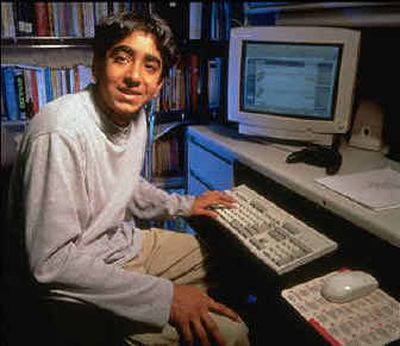More parents place limits for kids online

NEW YORK — Most parents of teenagers who go online say they set time limits on the kids’ Internet activity, according to a study released last week. They also try to monitor it, in part by placing computers in common areas.
Parents also don’t shun technical tools.
Slightly more than half of parents with online teens — 54 percent — have filtering software installed on home computers, up from 41 percent in 2000, the Pew Internet and American Life Project study found.
Another of the survey’s findings: 13 percent of American teens do not use the Internet at all.
Parents who are themselves online are more likely to set rules about when or for how long their kids can log on at home. Overall, nearly two-thirds of parents with online teenagers say they have such rules.
Nearly three-fifths keep the computer in an open area, like the living room.
“You set rules about television watching, cleaning up after yourselves, doing the dishes,” said Amanda Lenhart, a Pew research specialist and author of the study. “Doing it for online safety is an easy next step for parents to take.”
Lenhart cautioned, however, that time limits can result from family members competing to use a single computer rather than an effort to restrict kids’ usage.
She added that kids who have such rules at home are also more likely to access the Internet from school, possibly negating the impact of any rules.
Mothers are more likely than fathers to install filters. And younger parents and those who go online at least once a day are also more likely to use employ filters to try to prevent their children from viewing pornography and other material they deem objectionable.
In addition, 62 percent of parents of online teens say they check the sites their children visit, though only a third of teens who use the Internet at home believe their parents do so. And any reasonably tech-savvy teen knows how to erase their online footsteps.
The perception gap is significant, said Parry Aftab, an Internet safety expert who runs workshops for parents and children.
Aftab questions how strictly parents are really controlling their children’s time online. Few, she said, use software to enforce those limits.
And while the Pew finding on open access is comparable with those from other surveys and anecdotal evidence, Aftab notes that many kids are now getting online through cell phones, video game consoles and other gadgets that may not be centrally located.
Lenhart agrees that time limits and computer location won’t replace the need to educate kids about Internet use and safety.
One parent not connected to the study, William Draves of River Falls, Wisc., is skeptical about whether time limits or similar restrictions do much. He says they may even be counterproductive, so he sets no limits and uses no filtering software on his 18-year-old son, even letting him connect wirelessly from the roof when he wants.
“The Internet is going to be their life,” he said. “This is how they are going to earn their living. This is how we communicate. This is the central feature of a middle-class lifestyle.”
The Pew study is based on random telephone calls with 1,100 children 12 to 17 years old and their parents. They were conducted Oct. 26 to Nov. 28. The main findings have a margin of sampling error of plus or minus 3 percentage points.
The survey also finds that of the 13 percent of American teens who do not use the Internet, about half were once online but dropped out. They are most likely to blame lack of interest or access, followed by concern about safety.
A small percentage say their parents no longer let them use the Internet.
Those who never had access are most likely to cite lack of interest or being busy, with lack of access ranking third.
Separately, Pew reported Thursday that the percentage of older Americans online continues to grow.